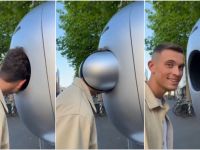Huawei laid off around 70 percent of staff at its Futurewei Technologies research arm in the US. Despite recent signals that Washington was easing pressure on the Chinese tech giant, the ban is still in force.
{"preview_thumbnail":"https://cdn.flowplayer.com/6684a05f-6468-4ecd-87d5-a748773282a3/i/v-i-a…","video_id":"ac42da46-10ce-476d-b0d6-9c52511705e0","player_id":"8ca46225-42a2-4245-9c20-7850ae937431","provider":"flowplayer","video":"Top 10 Safest Countries in 2019"}
It was earlier reported that some of the tech giant’s Chinese staff in the US were offered a chance to return to China and keep their job at the company.
Futurewei is believed to have offices in Silicon Valley and the greater Seattle, Chicago and Dallas areas. Its staff comprises more than half of the 1,500 people Huawei hired in the US.
After the US Commerce Department placed the parent company on the trade blacklist in May, effectively barring American businesses from dealing with Huawei, the work at the research and development subsidiary is believed to have come to a standstill. In June, US President Donald Trump said that American companies can resume selling equipment to Huawei, but did not remove the company from the Entity List.
“This is not a general amnesty, if you will,” White House economic adviser Larry Kudlow later stated, clarifying Trump’s sales approval.
“Huawei will remain on the so-called Entity List where there are serious export controls and in national security inferences or suggestions there won’t be any licenses [awarded],” he added.
On Monday, Trump met with senior officials of top technology companies, including Google, Intel, and Qualcomm among others. During the meeting, Trump agreed with the corporations to make “timely” decisions on their requests to the US Department of Commerce to continue doing business with Huawei.
Despite the big tech support for Trump’s policies, including restrictions on Huawei over national security concerns, some firms are reportedly unsatisfied with the lack of clarity on the matter.








